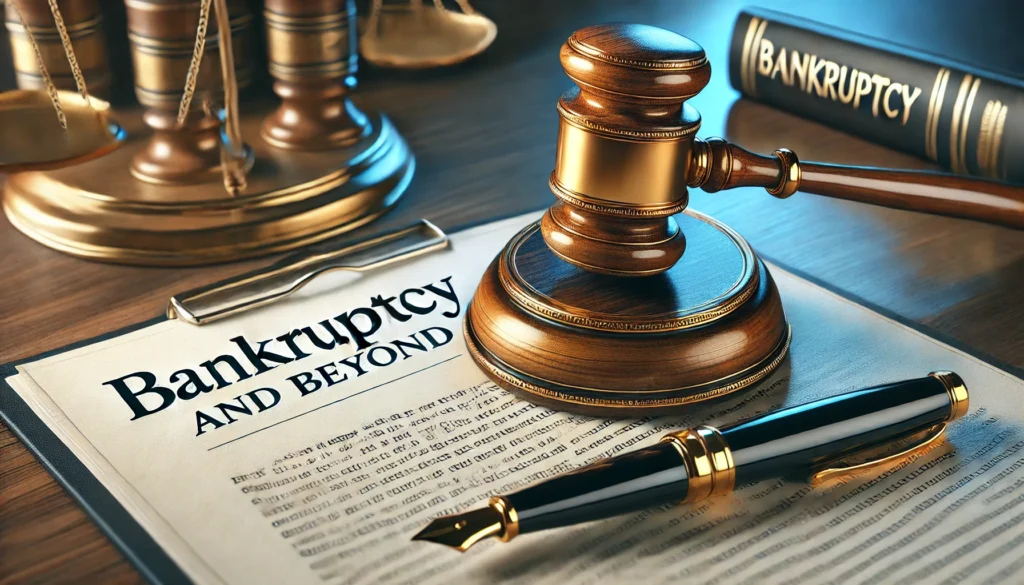Bankruptcy is often viewed as a financial dead end, but it can also serve as a critical turning point toward a better financial future. Understanding the nuances of bankruptcy, its implications, and how to rebuild after the process is essential for navigating this challenging journey. This article explores the legal, financial, and emotional aspects of bankruptcy, providing a roadmap for moving forward with resilience and hope.
What is Bankruptcy?
Bankruptcy is a legal process that offers individuals or businesses overwhelmed by debt a chance to reset. It involves liquidating assets or creating a repayment plan under court supervision to satisfy creditors. By understanding the different types of bankruptcy, individuals can determine the best path for their unique situation.
Bankruptcy and Beyond: Legal Foundations
When filing for bankruptcy, it’s vital to understand the legal requirements and procedures. Bankruptcy laws vary by country and sometimes even within states. For example, the United States offers Chapter 7, Chapter 11, and Chapter 13 bankruptcy options, each serving different needs. Knowing your rights and responsibilities under the law is the first step in navigating bankruptcy and beyond.
Types of Bankruptcy and Their Implications
The most common types of bankruptcy include:
- Chapter 7: Liquidation of non-exempt assets to pay creditors.
- Chapter 11: Reorganization for businesses to remain operational while repaying debts.
- Chapter 13: A repayment plan for individuals with a steady income.
Each type has its own advantages and drawbacks, making it essential to evaluate your financial circumstances carefully.
Bankruptcy and Beyond: Financial Repercussions
Bankruptcy significantly impacts your financial standing, including credit scores, access to loans, and future financial opportunities. Understanding the financial consequences is key to making informed decisions. While bankruptcy may reduce immediate debt, it often requires years of rebuilding credit and trust with lenders.
Emotional Toll of Bankruptcy
The emotional impact of bankruptcy cannot be overstated. Feelings of shame, failure, and stress are common among individuals facing this process. However, acknowledging these emotions and seeking support from friends, family, or professional counselors can help you move through the journey of bankruptcy and beyond with greater resilience.
Steps to Filing Bankruptcy
Filing for bankruptcy involves several critical steps:
- Assess Your Financial Situation: Determine if bankruptcy is the best solution.
- Consult a Legal Professional: Seek guidance from a bankruptcy attorney.
- Gather Documentation: Collect financial records, including debts, income, and assets.
- File the Petition: Submit the necessary paperwork to the court.
- Attend Hearings: Participate in creditor meetings and court proceedings.
Following these steps ensures that the process is completed efficiently and with minimal complications.
Bankruptcy and Beyond: Rebuilding Financial Stability
Emerging from bankruptcy requires a solid plan to rebuild your financial foundation. Start by creating a realistic budget, saving an emergency fund, and gradually improving your credit score. Securing a steady income and managing expenses responsibly can help you regain financial independence.
Alternatives to Bankruptcy
Bankruptcy should be considered a last resort. Alternatives such as debt consolidation, negotiation with creditors, or financial counseling may provide viable solutions without the long-term consequences of bankruptcy. Exploring these options can sometimes help you avoid the emotional and financial challenges of bankruptcy and beyond.
Legal Protections After Bankruptcy
Once the bankruptcy process is complete, individuals gain certain legal protections. Creditors are prohibited from pursuing discharged debts, offering a fresh start. Understanding these protections ensures that you can confidently move forward without fear of harassment from creditors.
Bankruptcy and Beyond: Embracing a Fresh Start
While the journey through bankruptcy can be daunting, it also offers an opportunity for a new beginning. By learning from past financial mistakes, setting clear goals, and maintaining a positive outlook, individuals can transform their lives. Bankruptcy and beyond is about more than overcoming debt; it’s about rebuilding a secure and prosperous future.
Conclusion
Bankruptcy is not the end of the road but rather a stepping stone to a fresh financial start. By understanding the legal, financial, and emotional aspects of bankruptcy, individuals can navigate this challenging phase with confidence. Remember, the journey of bankruptcy and beyond is an opportunity to rebuild, learn, and achieve financial stability for a brighter future.
Article Recommendations
The Hidden Truths About Bankruptcy: Myths, Realities, and Survival Tips
Bankruptcy Laws Demystified: What You Need to Know Before Filing
Life After Bankruptcy: Strategies for a Fresh Financial Start

